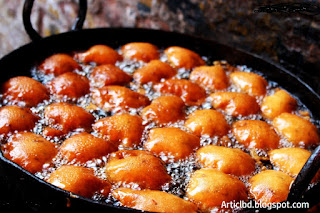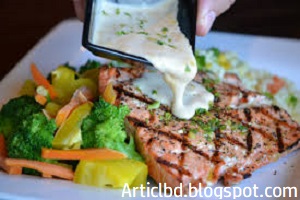CHOPS 20 FREQUENTLY USED RECIPE TERMS TO LEARN
 |
| FREQUENTLY USED RECIPE |
We live in when plans are all finished, yet less people cook dinners at home than any time in late memory. We're cooking less not simply considering the way that it's difficult to put a sensible devour the table after work, yet also because many don't have the data essential to comprehend what those rules in plans mean. It simply takes one age to lose cooking capacities in a family; if you were not instructed to cook, there is no clarification you should be depended upon to expertise.
On the off chance that you're new to cooking, or basically need a rapid lift, here are 20 terms sometimes used in plans; acknowledging what they mean can help redirect you from simply a recipe fan into a cooling fan.
Still to some degree firm: This term implies food sources that have been cooked in a liquid (normal water) until essentially firm to the eat. "Still to some degree firm" is by and large put something aside for cooking pasta, yet then again is found in plans for cooking rice.
Air pocket: Water rises at 212 degrees Fahrenheit loose level (for every 500-foot development in tallness, cut down the breaking point by around 1 degree Fahrenheit). Gurgling has bubbles that development from the lower part of the compartment to the outside of the water, in quick movement. Right when the air pockets are more enthusiastic and difficult to see independently, it is known as a "moving air pocket."
Burn: Singing incorporates cooking something with prompt, genuine warmth. This term is by and large held for heat sources that are directly absurd being cooked, anyway sometimes you will in like manner see "singe" identified with grilling. Singing is as regularly as conceivable related with cooking meats or finishing a dish where a carmelized top is needed. Most ovens have a "cook" setting.
Braise: This is a very certain cooking technique, and if not performed successfully, can lose a recipe. To braise meat, fish, or vegetables, burn it first in fat (like margarine or oil) and put in a protected spot. By then sauté mirepoix (see underneath) in a comparable pot, deglaze (see under) the holder with your braising liquid, and return your meat, fish, or vegetables to the braising liquid, cover your skillet, and stew it delicately until cooked. The measure of each fixing will be shown in your equation, yet the key here is to not use a great deal liquid, and to cook it on a lower heat.
Bouillon: Bouillon is a readied stock, anyway the term can be used alternately with pre-arranged 3D shapes encased by foil or compartments found in grocery stores that are used to make a readied stock. (See this to sort out some way to make your own prepared bouillon, and read this to acquire capability with the differentiation between stock, consommé, bouillon, stock, soup, and stew.)
Cut: This is a general procedure for chopping food into diminished down pieces (around 1/4-inch in size, or the thickness of a pencil). A colossal bladed culinary expert's sharp edge is valuable for hacking, dicing, and mincing When a recipe calls for finely cut, center around pieces around 1/8-inch in size (or a huge part of the thickness of a pencil). Exactly when the equation demonstrates a coarse or brutal hack, slice greater parts (anyway near about the size of a quarter). Cooking times influence how quickly the size of the separated food will plan, which is the explanation it's basic to cut around to the size called for in the equation.
Deglaze: This strategy is used in various plans, including those calling for braising (see above). Deglazing incorporates adding wine or another cooking liquid into a skillet in which meats or vegetables have been singed (the sautéed meat or vegetables are taken out from the dish preceding deglazing). In the wake of adding the liquid to the in reality warm compartment, use a wooden spatula (to ensure that your dish isn't harmed), scratch the lower part of the skillet of its devoured pieces, and blend them into the liquid. The result is a full-upgraded sauce for your supper.
 |
| CHOPS & POTATO |
Dice: Dicing resembles dividing, except for dicing is for each situation finely hacked, unsurprising in size, and amazing in appearance. It's the precision of the cut that perceives dicing from hacking. Try not to spare a moment to finely sever for home plans. Julienne: To julienne is to cut food (regularly vegetables), into match-sized pieces. This can be incredibly monotonous and is all around silly in the home kitchen; hacking is a productive other alternative.
Mince: This is the best level of hacking, and is once in a while done using a food processor, or a sharp cook's cutting edge. Mincing is a strategy that allows the best proportion of flavor to be contributed by the mined food; periodically the minced vegetable is cut finely so much that it "condenses" into the dish. Mincing will influence the kind of the food at whatever point called for in a recipe.
Mirepoix: The French name for this strategy sounds excessive, anyway it gives a significant flavor to plans that you won't want to miss. Mirepoix reliably joins two segments onion, one segment carrots, and one area celery (thusly, 2 cups onion, 1 cup carrots, and 1 cup celery; or 1 cup onion, 1/2 cup carrot, and 1/2 cup celery, etc) The strategy incorporates hacking (see over) all of the three and either adding them directly to soups and stews or sautéing them over low warmth in oil until they start to convey their juices. The recipe you are following will control you to the method for choice.
Tangle: You'll see this word in drink plans, for instance, mojitos. The technique incorporates pressing the zest, natural item, or another fixing into the glass with a spoon or wooden muddler, which looks like a pestle of "mortar and pestle" ubiquity until it is beat or crushed. Muddling releases scrumptious flavor, and most plans won't show up at their idle limit in case someone chooses to misses this movement.
Puree: Purees are cooked vegetables, beans, or natural items that are crushed either by pounding or beating, either by hand or with a blender, food processor, or other mechanical techniques. Purees are planned to be extraordinarily smooth, like natural product purée.
Roux: Used to thicken sauces, soups, and stews, making a roux incorporates cooking identical totals (by weight) of flour and fat together until smooth. There are three sorts of roux. 1) A white roux is cooked immediately over medium warmth until the flour and fat are solidified fairly, by then disposed of from heat while it is at this point pale in concealing. 2) A light roux is a few minutes longer until it develops a hint of concealing. 3) A natural hued roux is cooked until it is caramelized to a stunning gritty hued tone, which offers flavor to dishes similarly as thickening power.
Reduce: Decreasing incorporates thickening and updating flavors in liquids (soups, wines, containers of vinegar, sauces, etc) by stewing (not rising) over medium warmth. You should blend the diminishing liquid to hold it back from burning-through. The equation will show the add up to decrease a liquid, anyway "significantly," is typical.
Sauté: Sautéing incorporates planning food over medium to high warmth, and without using a ton fat (as you may with a significant fry). Dependent upon what you are cooking, the food may ought to be blended ceaselessly, to help prevent devouring. If you are sautéing chicken, for example, the ideal effect may be a cooked skin.
Stew: While percolating (see above) occurs at 212 degrees Fahrenheit loose level, stewing occurs at some place in the scope of 180 and 190 degrees Fahrenheit unfastened level. Right when a liquid is cooked over low warmth and there are fundamentally no air pockets that break the surface, they are stewing. Stewing is a fragile cooking method that secures the flavor and surface of food sources. As a last resort, reliably stew food sources instead of gurgling them, which can oppositely influence the food, surface, and delicacy of food.
Sweat: In cooking, sweating is a term put something aside for vegetables that are cooked over low warmth in a little oil or margarine. The vegetables give up their clamminess to the holder, and consistent mixing grants the bounty sogginess to evaporate. Onions are as a rule sweated to the reason for being clear. The equation will show how long to sweat vegetables, and what the ideal outcome should be.
Whisking: While a whisk is a device, it is furthermore a blending or mixing strategy. Whisking, or whipping, incorporates rapidly mixing trimmings to join adequate air to make the mix light and padded. Whisking can be cultivated using a fork or a wire or a plastic whisk. Whisking is a term consistently found in warming plans.
Zesting: Zesting makes a cooking fixing scratched or carefully cut from the wonderful surface of citrus common items, like oranges, lemons, and limes. It's basic to simply use the splendid bits of the skin; the white piece of the skin is extreme. While there are strength instruments for zesting citrus, an amazingly sharp paring cutting edge can moreover be used to dispose of the











No comments:
Post a Comment